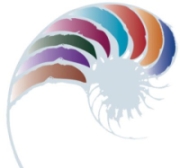
All LEARNZ field trips targeting primary and secondary schools are closely linked to the New Zealand curriculum, in particular science, social studies and geography. They can also be used by other subject teachers.
Key concepts
Adaptations, Antarctica, climate change, environment, freezing, glaciation, human impacts, ice, marine research, melting, monitoring change, ocean currents, oceans, Offshore, pressure, Ross Ice Shelf, Ross Sea, scientific research, sea, sustainability, temperature, water.
The New Zealand Curriculum - NZC
Key Competencies
LEARNZ virtual field trips contribute to the development of all five key competencies:
| Key Competencies |
Examples of Related Field Trip Components |
| Thinking |
Constructing questions to put to experts during Audioconferences and via Ask-an-Expert. |
| Using language, symbols and texts |
Interpreting and making meaning of a variety of language and symbols in the Background Pages and throughout the web site. |
| Managing self |
Numerous content-related Activities provide students with chances to engage with the material and create their own interpretation of the content. |
| Relating to others |
Videos connect students with a range of expert opinions. Students listen actively when seeking answers to video questions. |
| Participating and contributing |
LEARNZ Virtual Field Trips are an ideal medium for group-based topic inquiry. They also enable students to transfer new learning into the context of their own communities where they are encouraged to take action. |
(See page 12-13 NZC 2007)
Values
The Antarctica field trip encourages, models and explores these values:
- innovation, inquiry and curiosity
- diversity
- community and participation
(see page 10 NZC 2007).
E-learning and pedagogy
The Antarctica field trip directly involves learning that is supported by information and communication technology (ICT). In particular, the trip will:
- Assist the making of connections by enabling students to enter and explore new learning environments, overcoming barriers of distance and time.
- Facilitate shared learning by enabling students to join or create communities of learners that extend well beyond the classroom.
- Enhance opportunities to learn by offering students virtual experiences and tools that save them time, allowing them to take their learning further (Page 36 NZC 2007).
Social Science
| |
|
|
|
| Strand |
Achievement Aims |
Background Pages |
Related Activities |
|
Social Studies
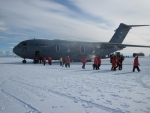
|
Place and Environment
- Level 2 Understand how places influence people and people influence places
- Level 3 Understand how people view and use places differently
- Level 5 Understand how people's management of resources impacts on environmental and social sustainability
|
All
|
Activities |
Science
| |
|
|
|
| Strand |
Achievement Aims |
Background Pages |
Related Activities |
|
The Nature of Science

|
Participating and contributing
- Levels 1-2: Explore and act on issues and questions that link their science learning to their daily living.
- Level 3-4: Use their growing science knowledge when considering issues of concern to them.
Understanding about science
- Levels 1-2: Appreciate that scientists ask questions about our world that lead to investigations and that open-mindedness is important because there may be more than one explanation.
- Level 3-4: Identify ways in which scientists work together and provide evidence to support their ideas.
Communicating in science
- Level 3-4: Begin to use a range of scientific symbols, conventions and vocabulary.
|
|
Activities |
|
Planet Earth and Beyond

|
Earth systems
- Level 2-5; Explore and describe natural features and resources
Interacting systems
- Level 2-5; Describe how natural features are changed and resources affected by natural events and human actions.
|
|
Activities |
|
Physical World
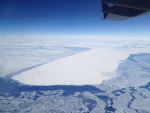
|
Physical inquiry and physics concepts
- Level 2-5; Explore everyday examples of physical phenomena, such as movement, forces, electricity and magnetism, light, sound, waves, and heat. Seek and describe simple patterns in physical phenomena
|
|
Activities |
|
Material World
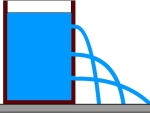
|
Properties and changes of matter
- Level 2-5; Observe, describe, and compare physical and chemical properties of common materials and changes that occur when materials are mixed, heated, or cooled.
|
|
Activities |
|
Living World
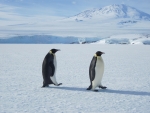
|
Ecology
- Level 2-5; Expalin how living things are suited to their particular habitat and how they respond to environmental changes.
|
|
Activities |
Technology
| |
|
|
|
| Strand |
Achievement Aims |
Background Pages |
Related Activities |
|
Technological Knowledge
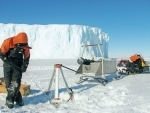
|
Technological Products
- Level 1-3; Understand the relationship between the materials used and their performance properties in technological products.
|
|
Activities |
|
Technological Practice

|
Planning for practice
- Level 1-3; Undertake planning to identify the key stages and resources required to develop an outcome. Revisit planning to include reviews of progress and identify implications for subsequent decision making.
Brief development
- Level 1-3; Describe the nature of an intended outcome, explaining how it addresses the need or opportunity. Describe the key attributes that enable development and evaluation of an outcome.
Outcome development and evaluation
- Level 1-3; Investigate a context to develop ideas for potential outcomes. Trial and evaluate these against key attributes to select and develop an outcome to address the need or opportunity. Evaluate this outcome against the key attributes and how it addresses the need or opportunity.
|
|
Activities |
|
Nature of Technology
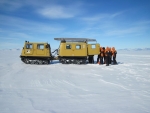
|
Nature of Technology
- Level 1-3; Understand how technological development expands human possibilities and how technology draws on knowledge from a wide range of disciplines.
|
|
Activities |
English
The selected processes and strategies indicators used in the table below are from Level three of the NZC, but aim to cover indicators from levels two to four.
| |
|
|
| Strand |
Processes and Strategies Indicators |
Example of Related Field Trip Component |
|
Listening, Reading and Viewing
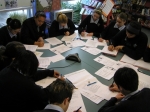
|
- selects and reads for enjoyment and personal fulfilment
- recognises connections between oral, written, and visual language
- integrates sources of information and prior knowledge confidently to make sense of increasingly varied and complex texts
- thinks critically about texts with increasing understanding and confidence
|
- printed copies of Background Pages could be part of classroom library
- making links between Audioconferences, Background Pages, and Videos
- Audioconferences, Audioconference Backchannel, Videos, Diaries, and Ask-an-Expert can be used to make sense of Background Pages and Diaries and generate questions to put to experts for further clarification
|
|
Speaking, Writing and Presenting
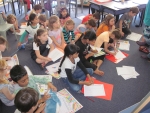
|
- uses an increasing understanding of the connections between oral, written, and visual language when creating texts
- creates a range of texts by integrating sources of information and processing strategies with increasing confidence
|
- making the connection between Audioconferences, Background Pages, Videos, and own discussion when generating written responses
- assimilate information from Audioconferences, Background Pages, Videos, and Ask-an-Expert to create a range of texts
|
















